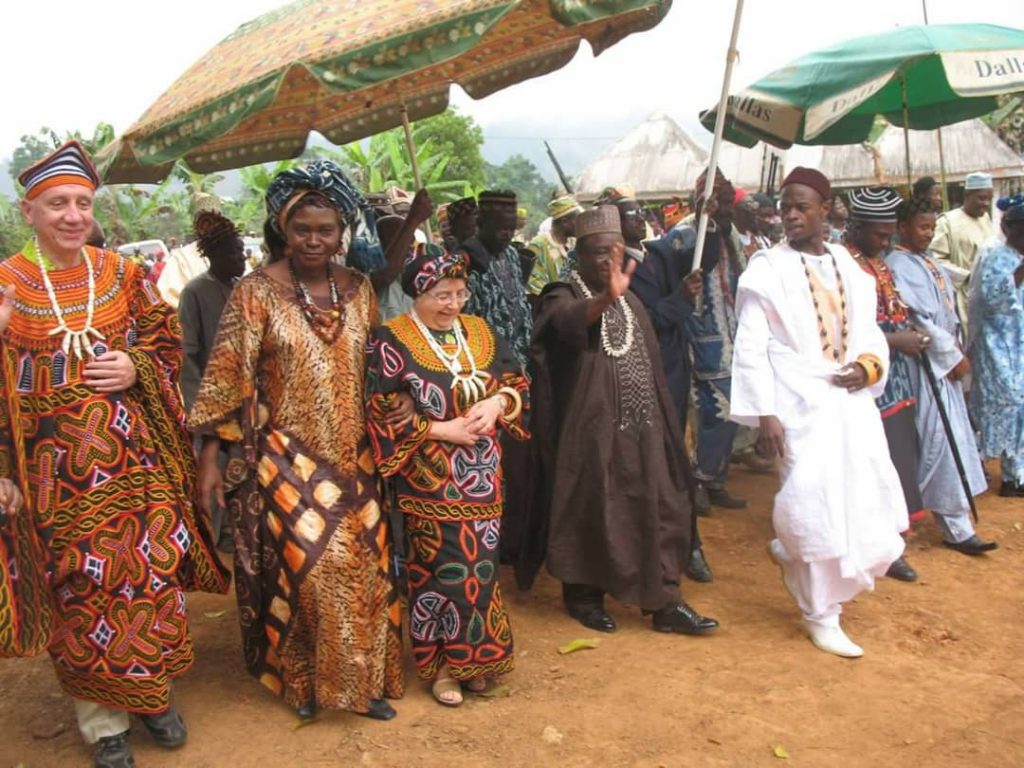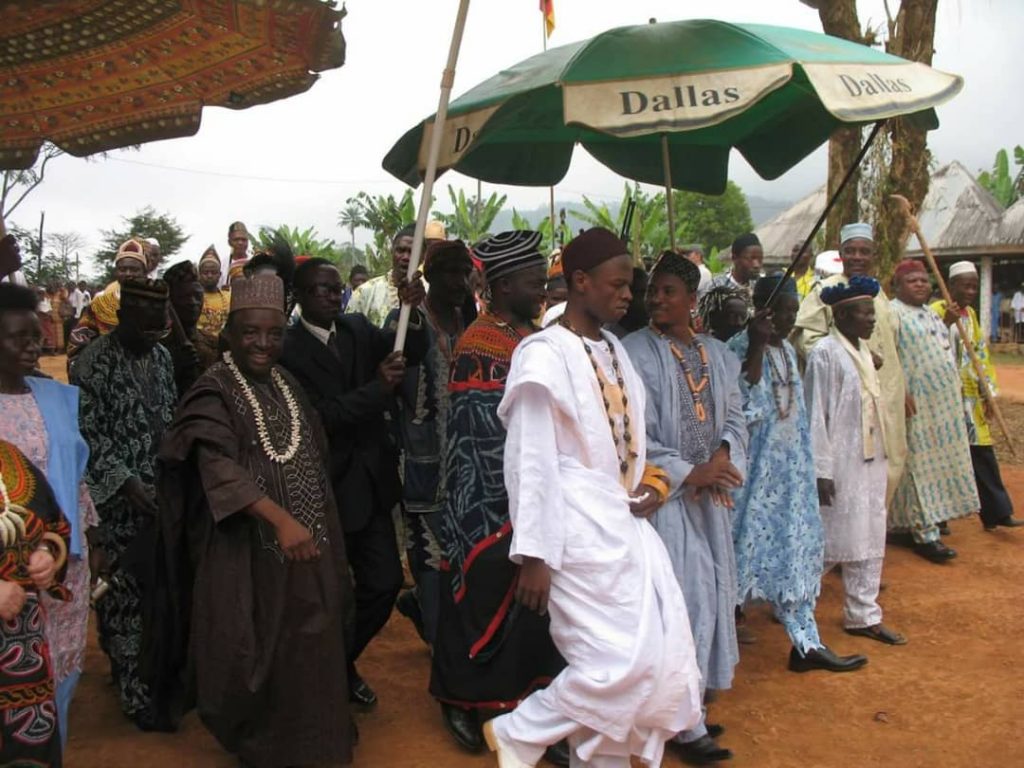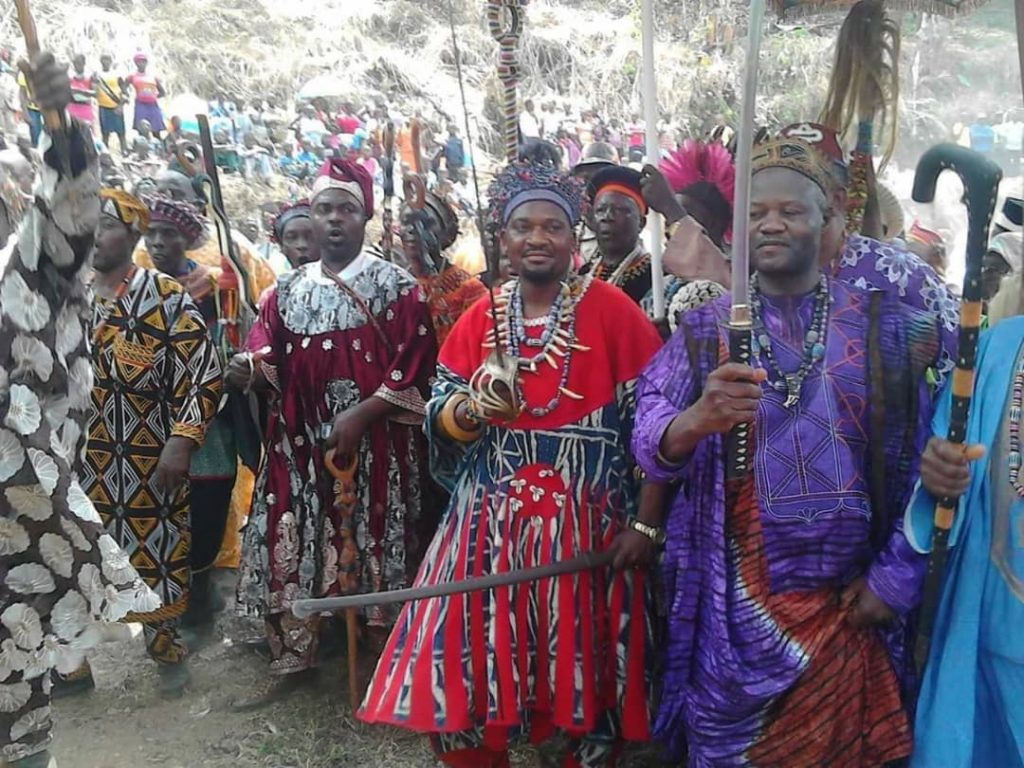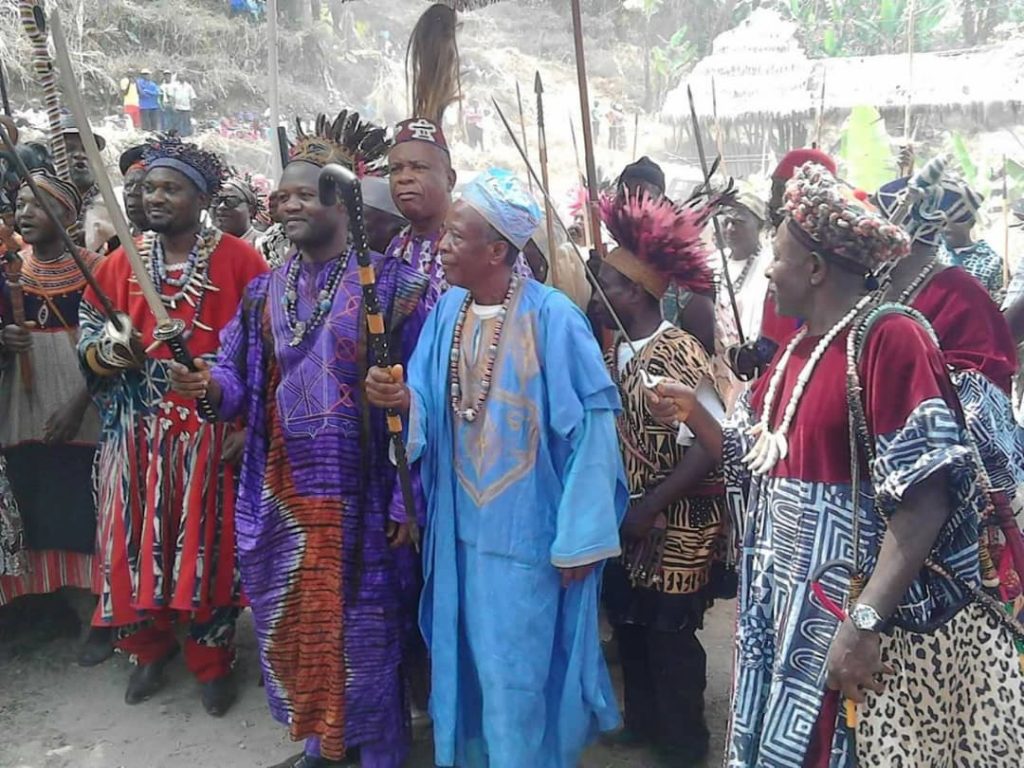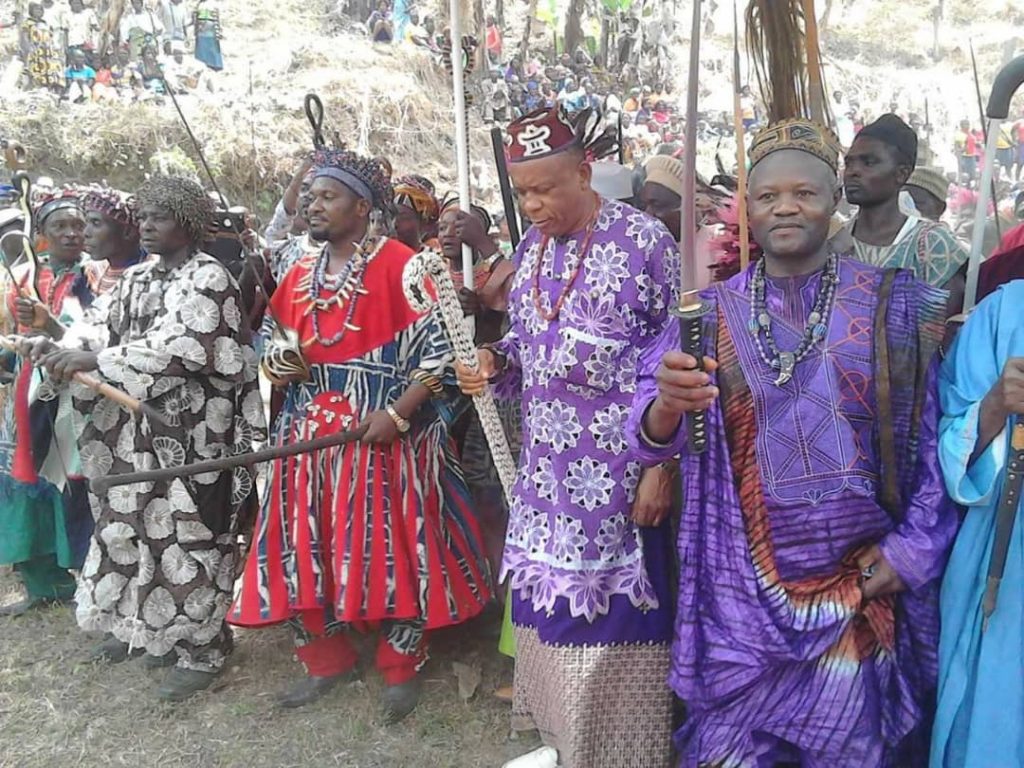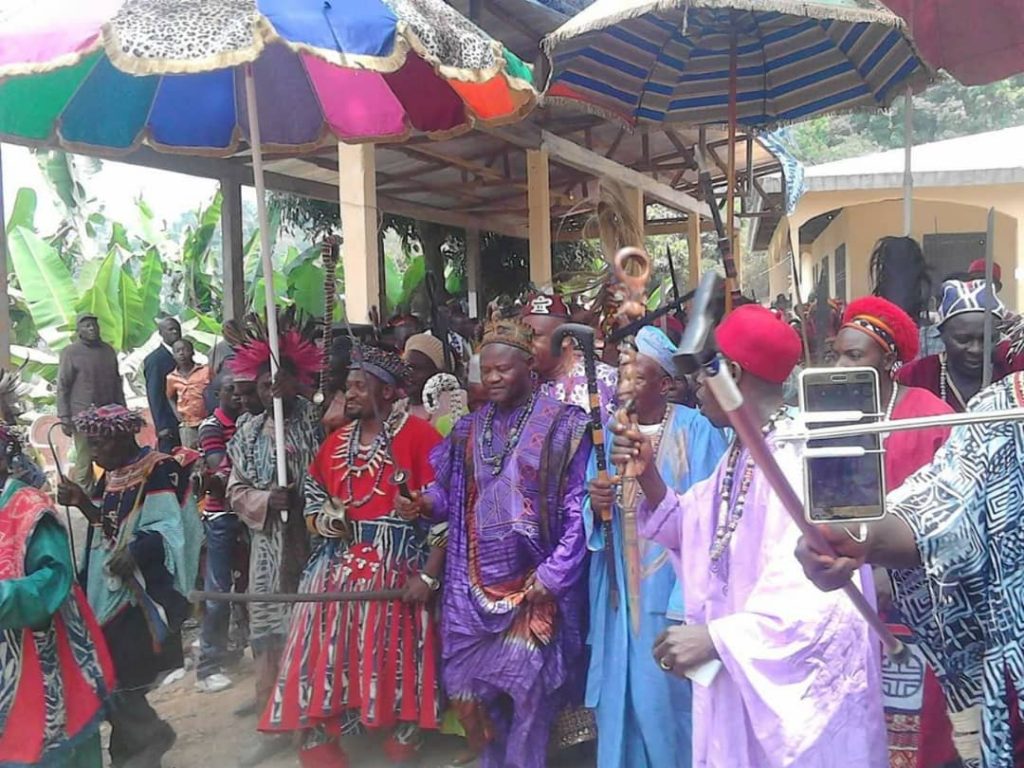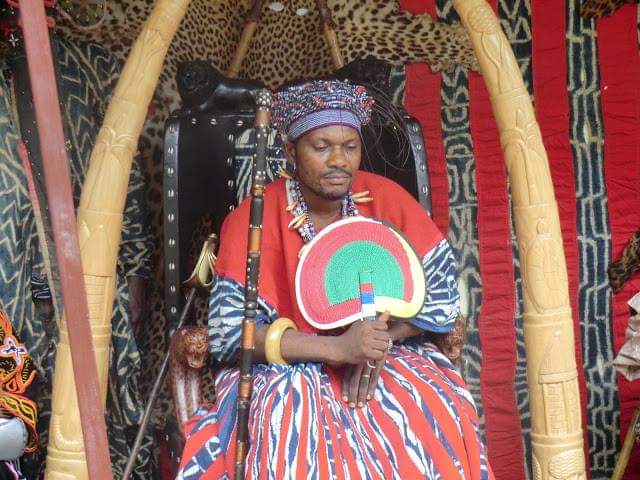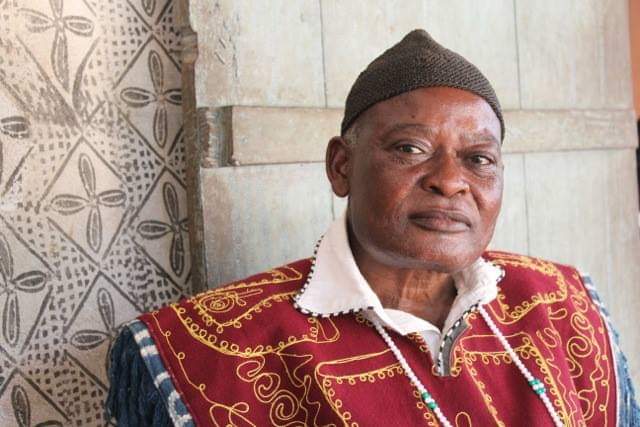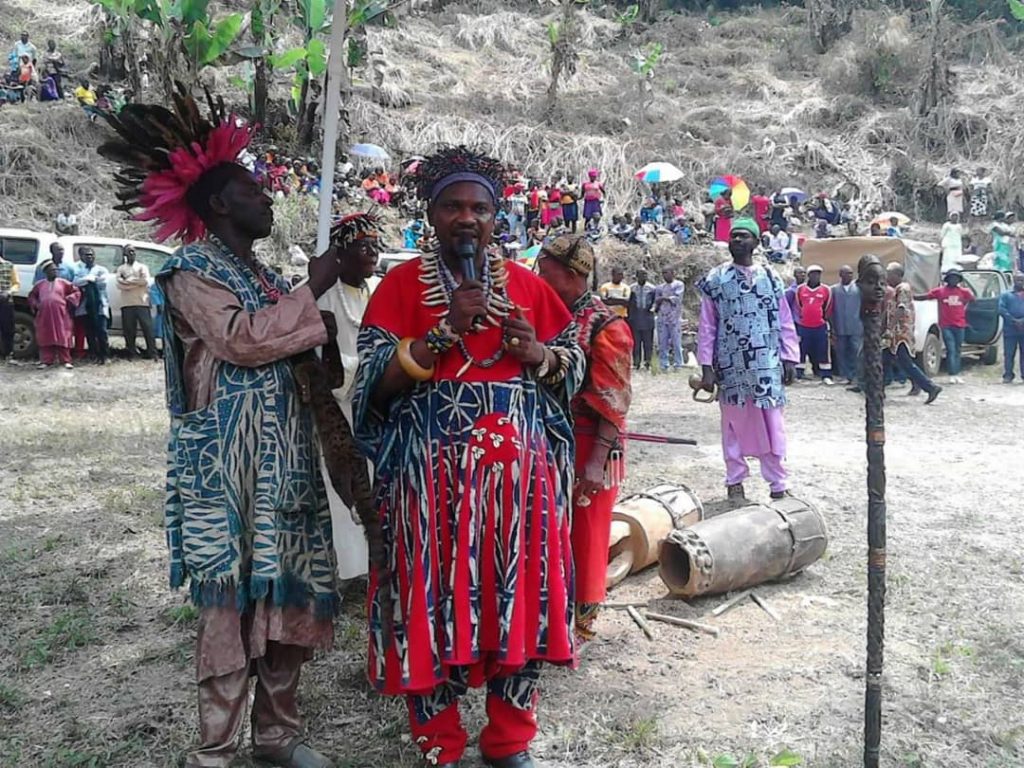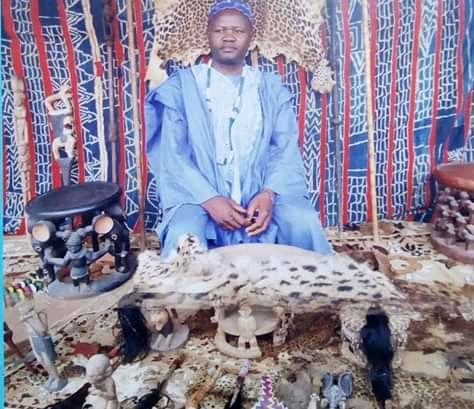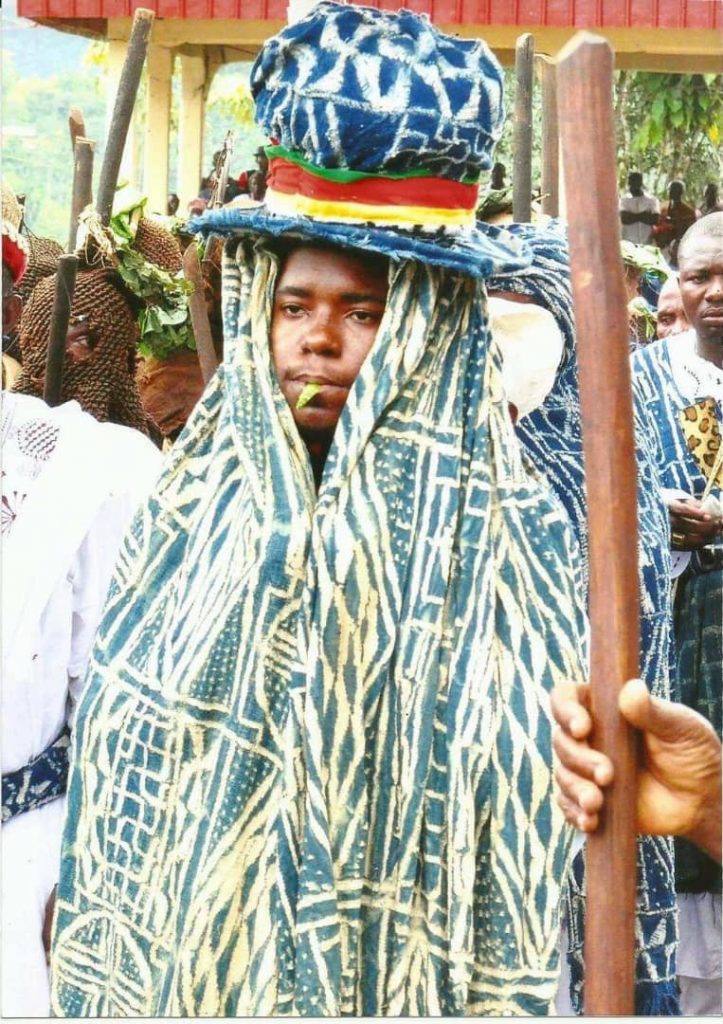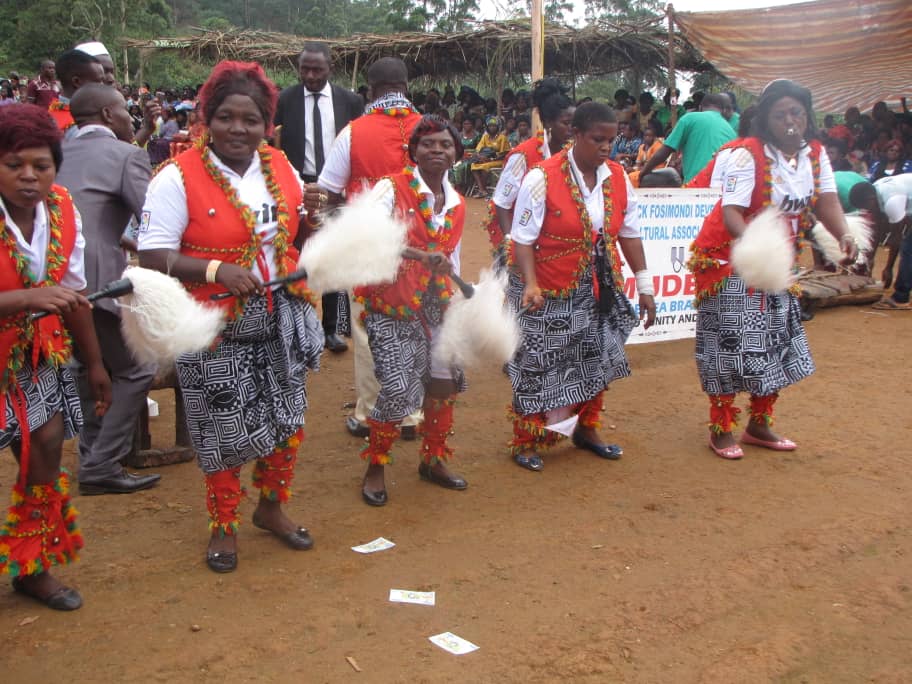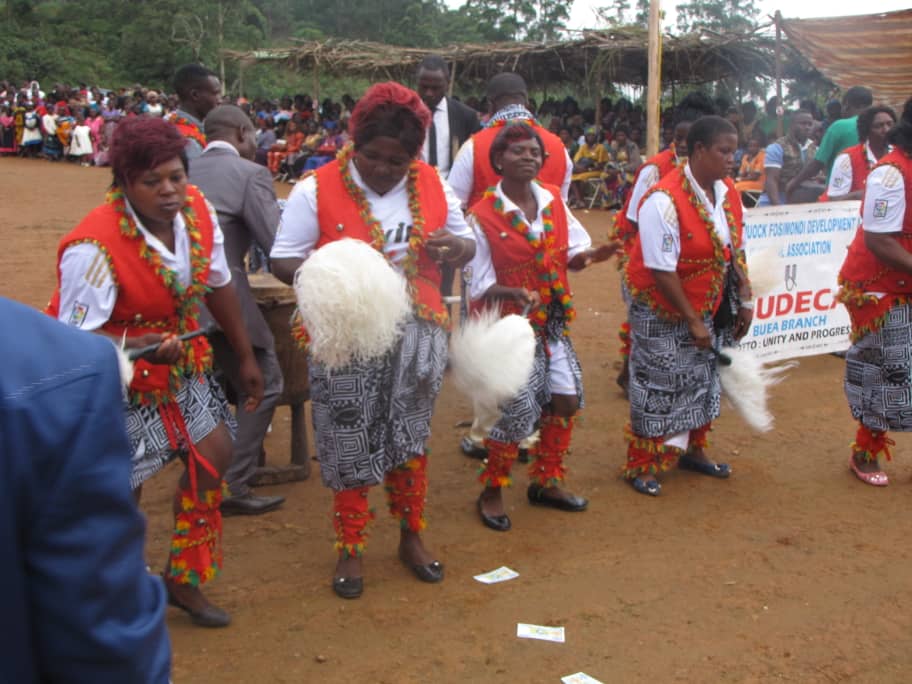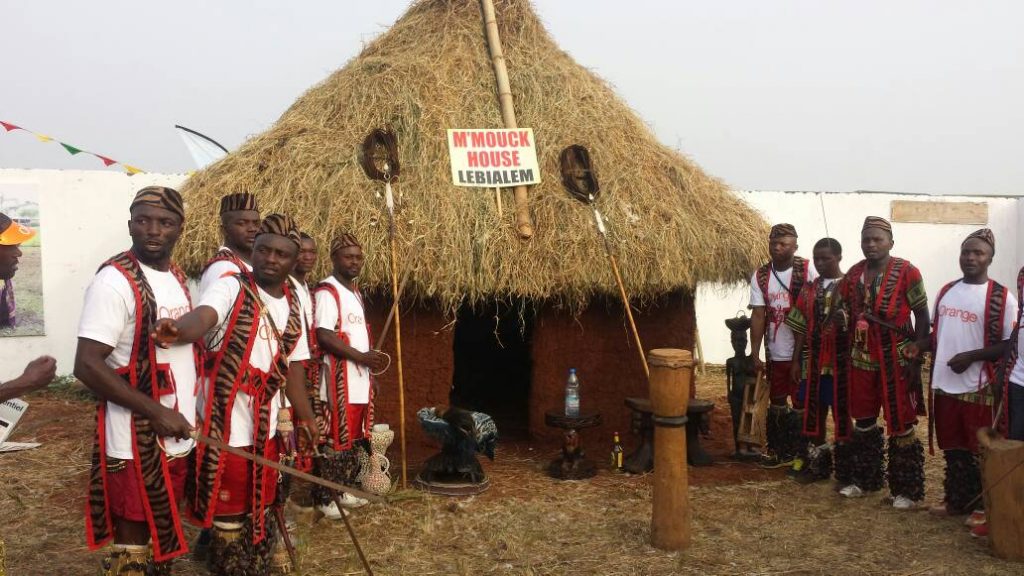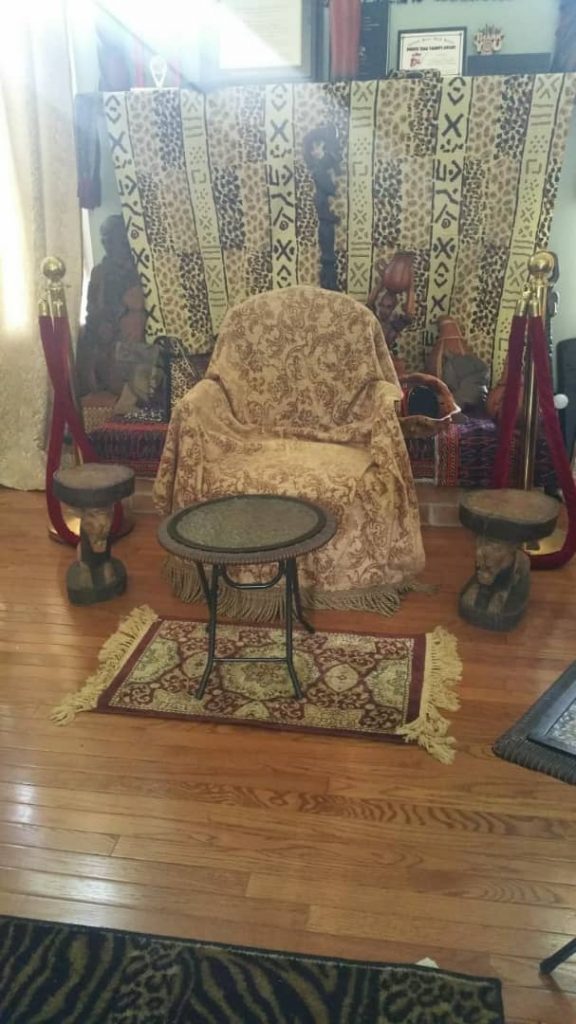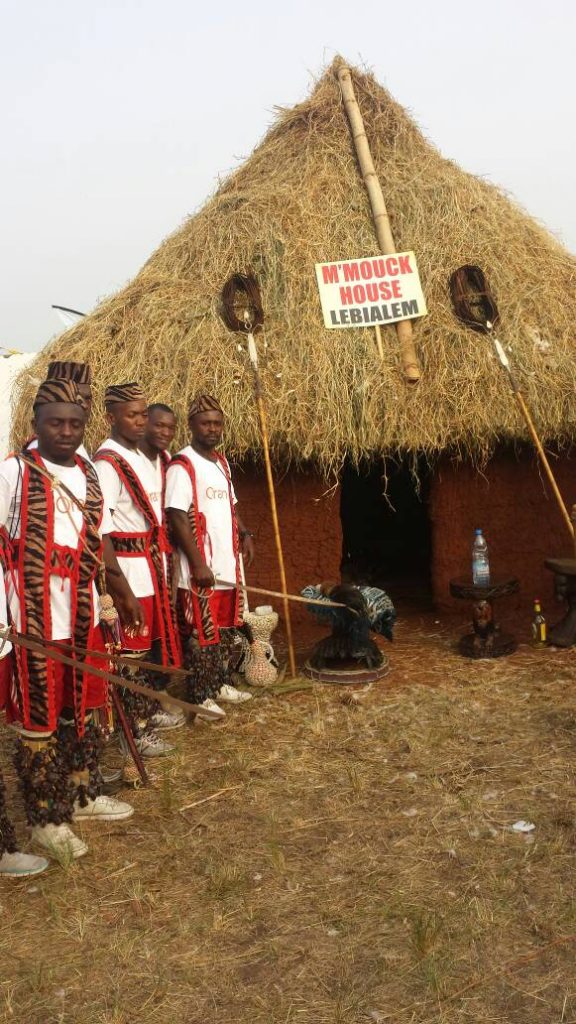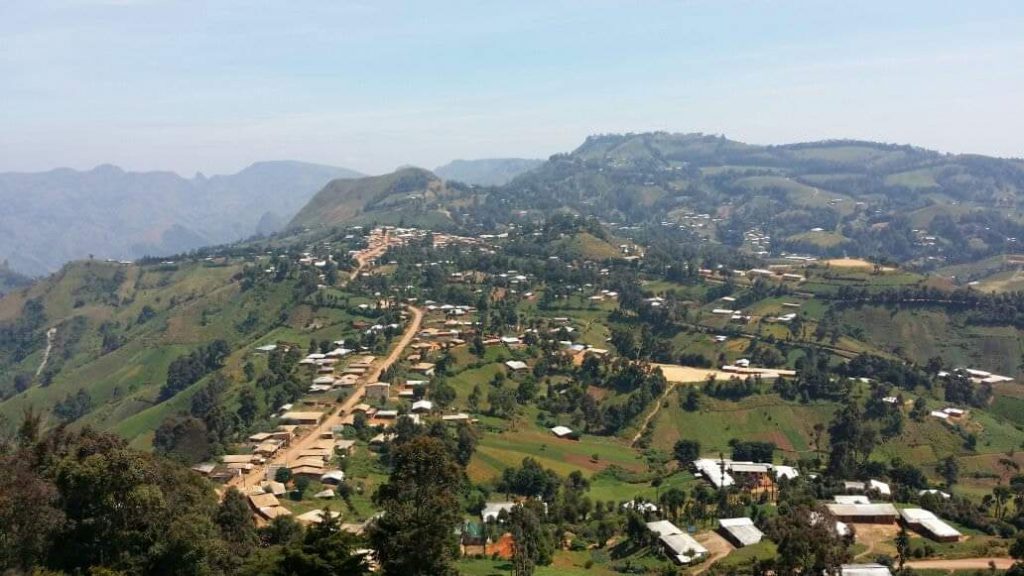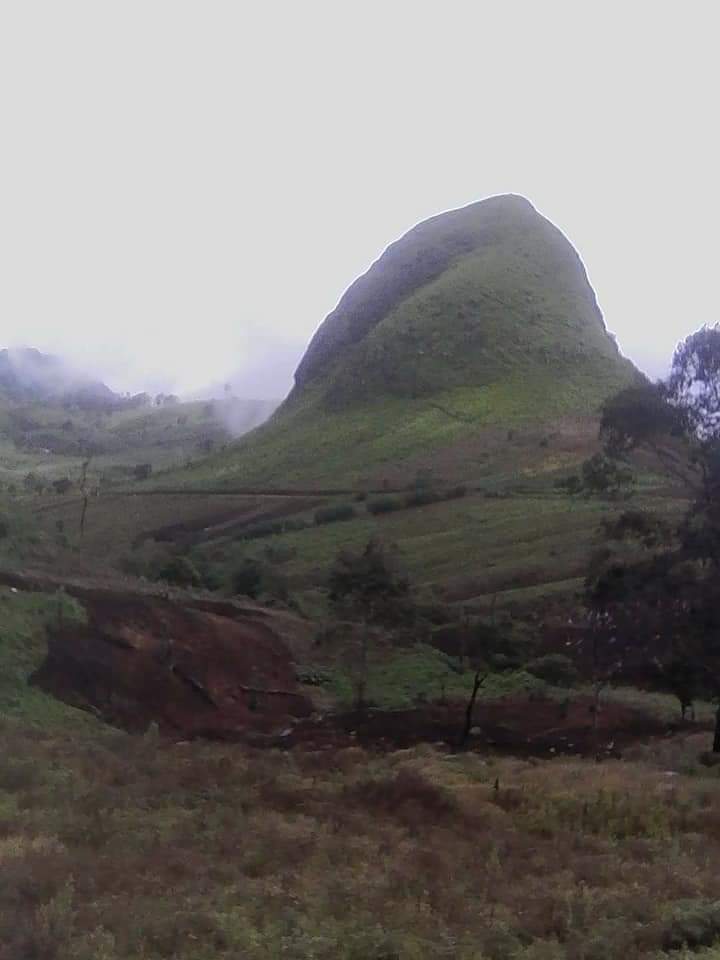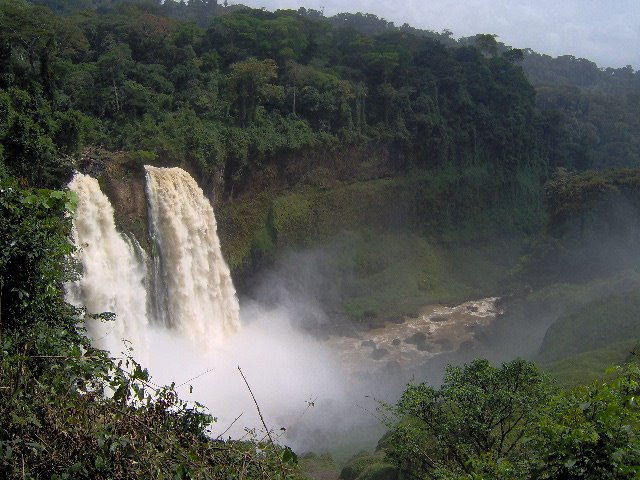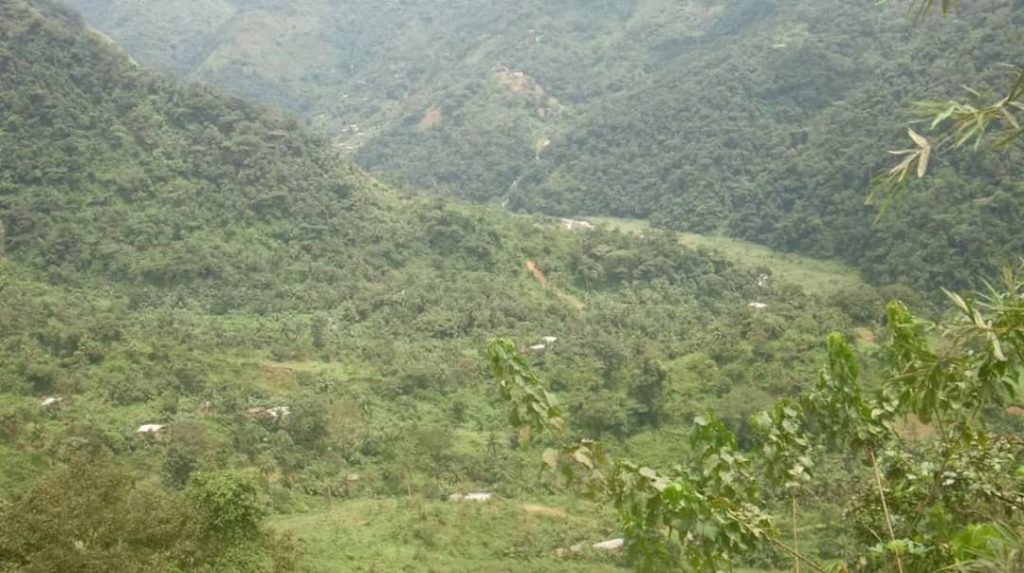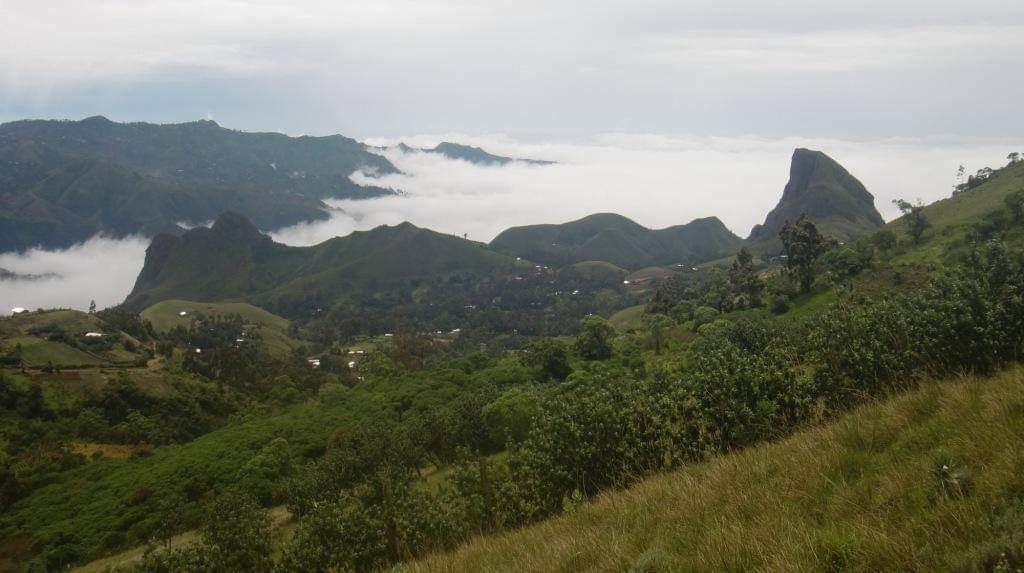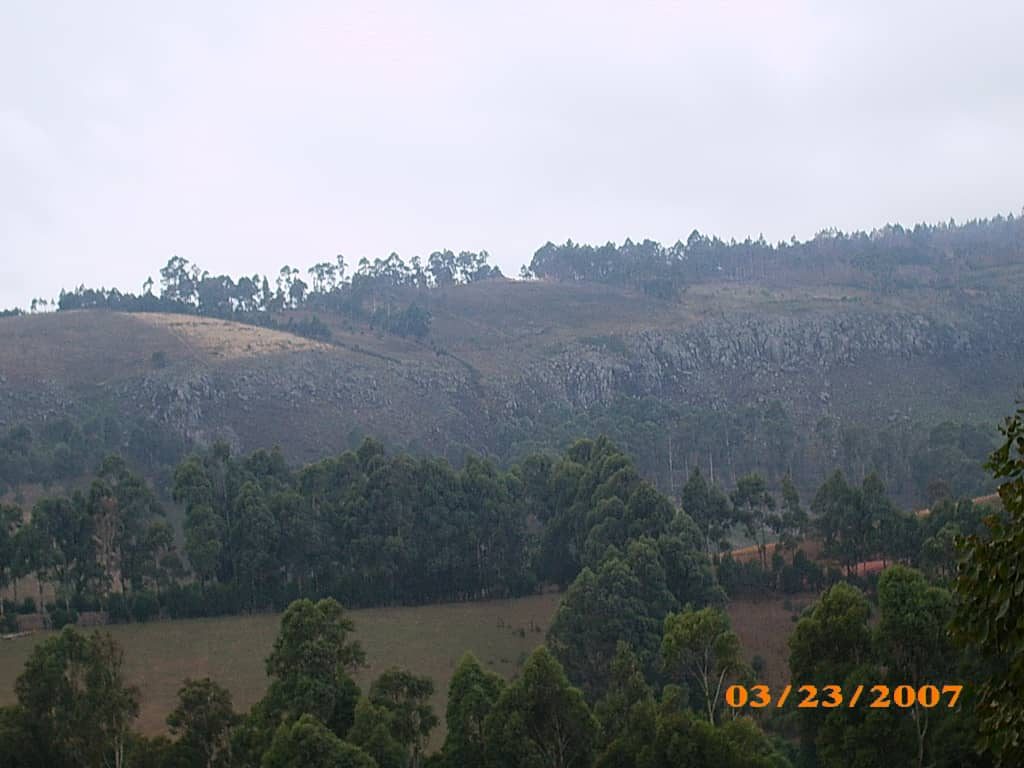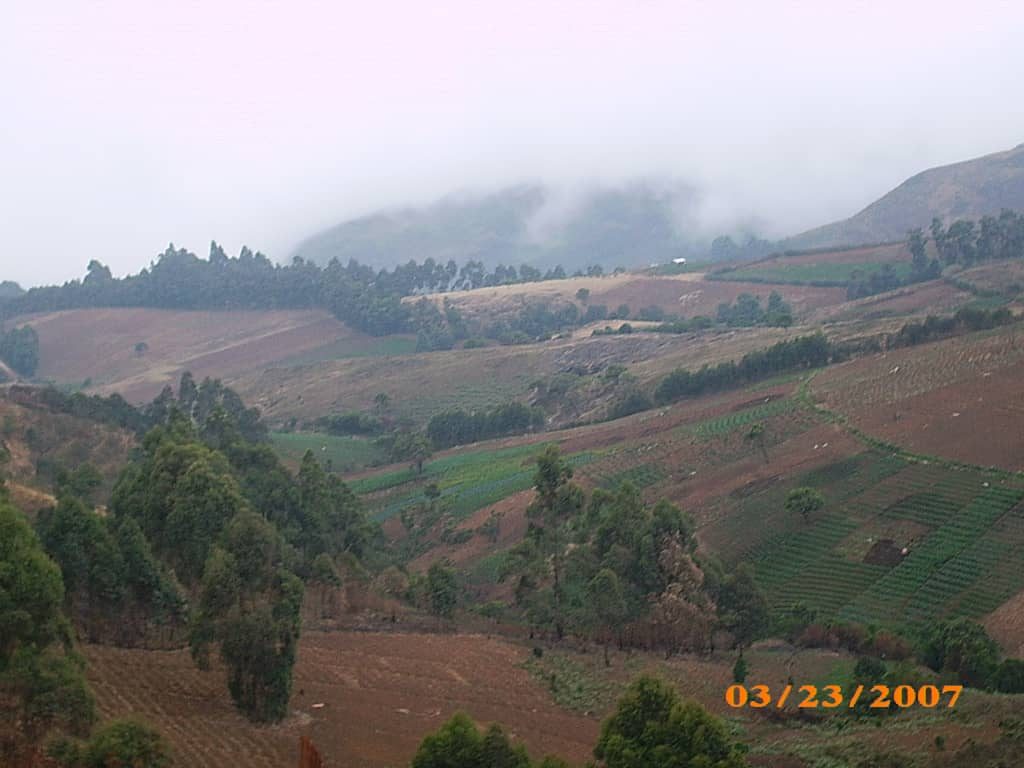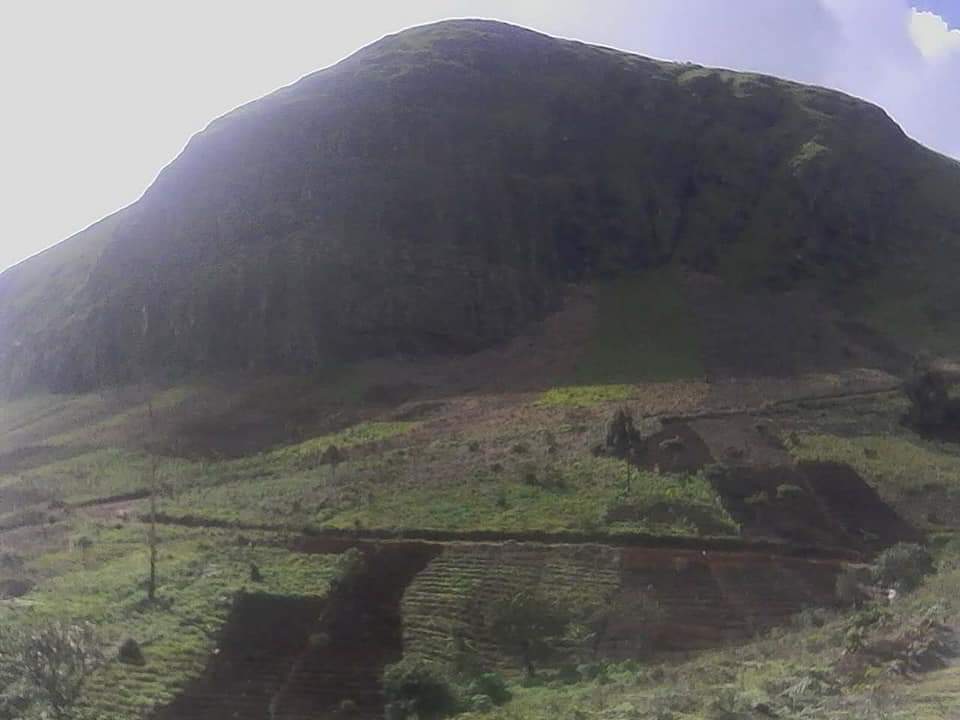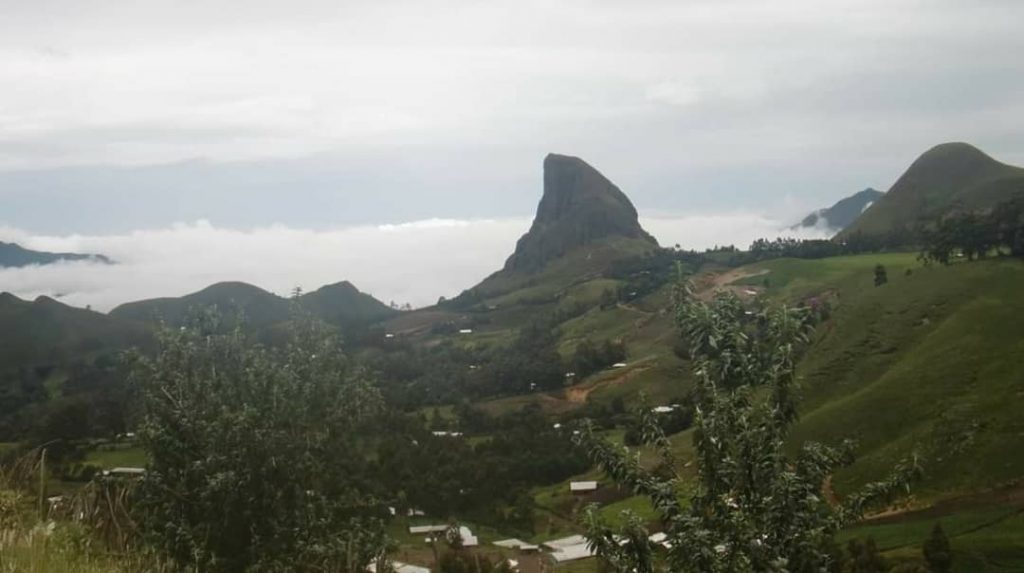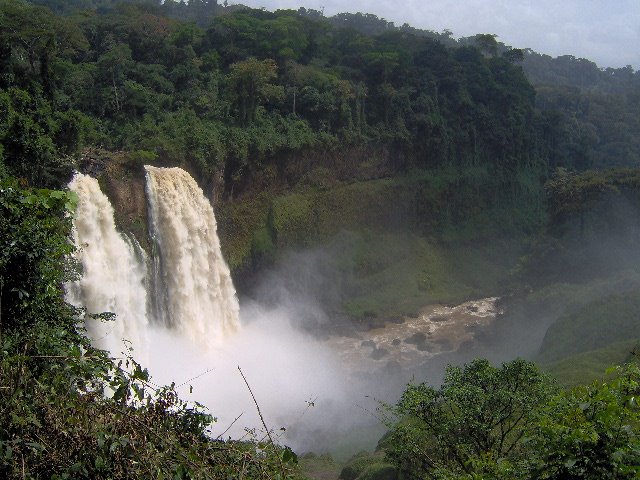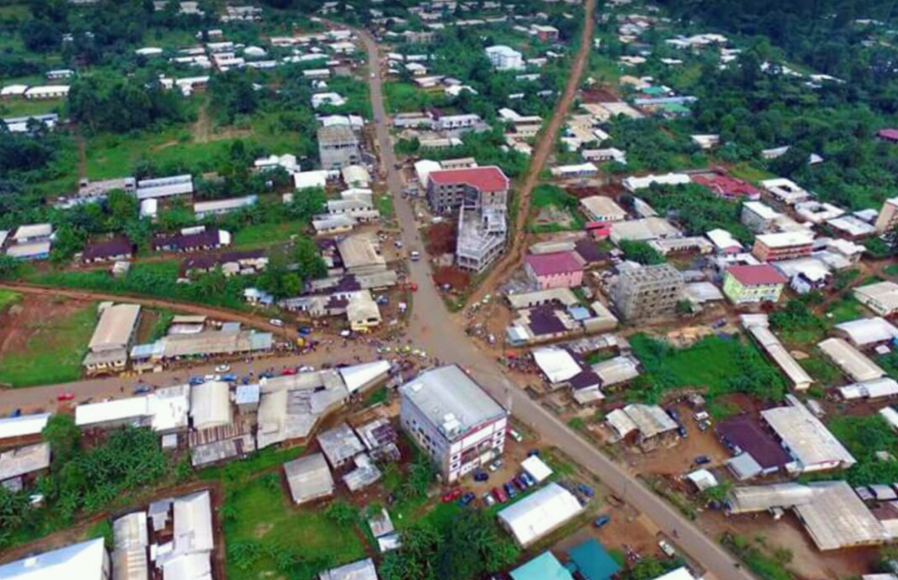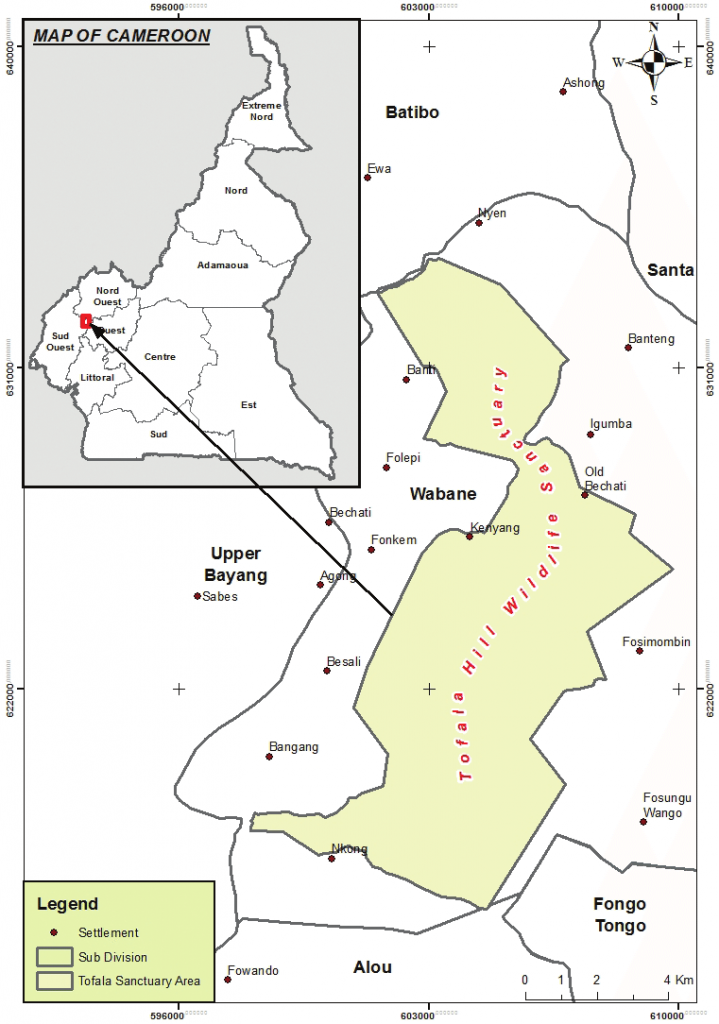LEBIALEM DIVISION
Interesting information about Lebialem Division and its people
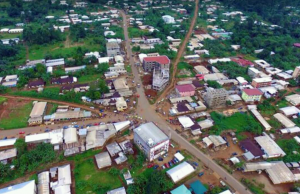
Lebialem Division is one of the six Administrative Divisions of the South West Region of Cameroon (SWR – Cameroon). This Division was created by a presidential Decree signed by Paul Biya in 1992 by upgrading the then Fontem Sub division which was a Sub Division under the Manyu Division to a Division with Head Quarter in Menji found in Fontem. The Division has three administrative Sub Divisions namely Alou, Fontem and Wabane. The Division is located on the mountainous north eastern part of South West Region. It is bordered to the East by Menua Division of the West Region (WR) , South and South West by the Manyu and Kupe-Muanenguba Divisions of the South West Region (SWR) and North by Momo Division in the North West Region (NWR). The area ranges from 180m to about 2510m above sea level (a.s.l).ma
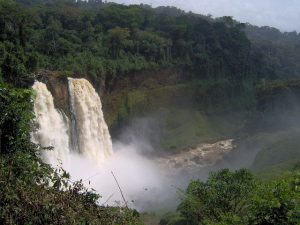 Lebialem Division got her name from a famous twin Water Fall (The Lebialem water fall) pronounced as (Lebe-alem) which means a hill from which water drops in to a pool. This water fall results from two separate and far apart rivers- Begeuh and Ntsembeuh which culminates at a hill at a very close range and plunge into single pool.
Lebialem Division got her name from a famous twin Water Fall (The Lebialem water fall) pronounced as (Lebe-alem) which means a hill from which water drops in to a pool. This water fall results from two separate and far apart rivers- Begeuh and Ntsembeuh which culminates at a hill at a very close range and plunge into single pool.
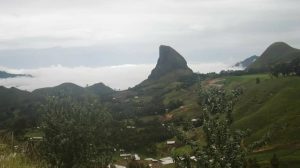 The Lebialem water fall is just one of several touristic sites and wanders of Lebialem Division. Amongst others we can think of the Nyi(s) Fongonkem in Mbindia-Leban (two giant isolated picks (inselbergs) that stand tall above the surrounding lands and can be seen from several positions in the Division in a bright day). Locals refer to them as the Male and Female Nyi(s), there is also the Totankeng in M’mock area (a massive rock that hangs on a high hill giving an impression that it will collapse the next minute at first sight but stands still.), Mt Marga in Bamumbu etc and a broad range of Fauna and Flora.
The Lebialem water fall is just one of several touristic sites and wanders of Lebialem Division. Amongst others we can think of the Nyi(s) Fongonkem in Mbindia-Leban (two giant isolated picks (inselbergs) that stand tall above the surrounding lands and can be seen from several positions in the Division in a bright day). Locals refer to them as the Male and Female Nyi(s), there is also the Totankeng in M’mock area (a massive rock that hangs on a high hill giving an impression that it will collapse the next minute at first sight but stands still.), Mt Marga in Bamumbu etc and a broad range of Fauna and Flora.
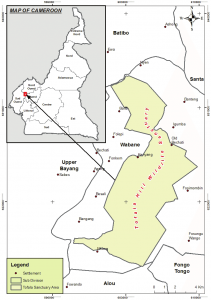 Another very interesting aspect of Lebialem Division is her strategic location at the crossroad of the Coastal Lowlands and Western Highlands of Cameroon. This explains why most of Lebialem Division is a high land area. The special impetus is that it takes off from the Mamfe Basin area and rises gradually or gently from the regions of Essoh-Atah, Njogui, Nsogoh and Fossong in Leban, Ntchen –Ndungated, and a greater part of Wabane Sub Division with level lands and low altitudes to Bamembou, the Alou market area, M’muock area and Mbidia region which have very high altitudes characterised by isolated hills and picks.
Another very interesting aspect of Lebialem Division is her strategic location at the crossroad of the Coastal Lowlands and Western Highlands of Cameroon. This explains why most of Lebialem Division is a high land area. The special impetus is that it takes off from the Mamfe Basin area and rises gradually or gently from the regions of Essoh-Atah, Njogui, Nsogoh and Fossong in Leban, Ntchen –Ndungated, and a greater part of Wabane Sub Division with level lands and low altitudes to Bamembou, the Alou market area, M’muock area and Mbidia region which have very high altitudes characterised by isolated hills and picks.
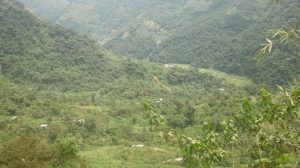 Lebialem is also a transitional zone from the tropical forest vegetation to the Savannah/grassland vegetation of Cameroon. Moving through Lebialem Division from the Mamfe Basin area or the Mbo-Bayang Sanctuary you will be stroke by the gradual but progressive change in vegetation, climate, and altitude as you progress towards the Western high lands of Cameroon. Considering the fact the climate is the major factor that influences vegetation, one will experience warm temperatures as he/she enters Lebialem from the Mamfe and Mbo areas. The vegetation here is more of forest (tropical evergreen) with trees of above 50m like Iroko, Mahogany, Boma, and crops like Coco Nuts, Cocoa, Bitter cola, Palms, Robusta coffee, etc. The temperatures and vegetation will keep changing and the next range of forest is deciduous forest and the climate looks warm. The vegetation here is characterized by trees of height below 50m and crops may include some of the crops found in the first zone but their productivity is low. Some like Coconut, palms, Bitter cola and cocoa may flourish but not produce fruits. This zone paves the way to the Savannah/ grassland zone with trees of height below 30m. The only trees which can grow above 30m are Eucalyptus and other crop trees like Cola nut trees which are planted and which are suited for the climate. Temperatures are generally very low with foggy weather. Crops that dominate here are Arabica coffee, beans, potatoes, and some tubers. In the M’muock area, there cultivation of foods stuff like carrots, vegetables, onions, Irish potatoes, etc. and rearing of cattle like cows, sheep goats, donkeys, etc. Generally, if Cameroon is Africa in miniature then Lebialem is Cameroon in miniature.
Lebialem is also a transitional zone from the tropical forest vegetation to the Savannah/grassland vegetation of Cameroon. Moving through Lebialem Division from the Mamfe Basin area or the Mbo-Bayang Sanctuary you will be stroke by the gradual but progressive change in vegetation, climate, and altitude as you progress towards the Western high lands of Cameroon. Considering the fact the climate is the major factor that influences vegetation, one will experience warm temperatures as he/she enters Lebialem from the Mamfe and Mbo areas. The vegetation here is more of forest (tropical evergreen) with trees of above 50m like Iroko, Mahogany, Boma, and crops like Coco Nuts, Cocoa, Bitter cola, Palms, Robusta coffee, etc. The temperatures and vegetation will keep changing and the next range of forest is deciduous forest and the climate looks warm. The vegetation here is characterized by trees of height below 50m and crops may include some of the crops found in the first zone but their productivity is low. Some like Coconut, palms, Bitter cola and cocoa may flourish but not produce fruits. This zone paves the way to the Savannah/ grassland zone with trees of height below 30m. The only trees which can grow above 30m are Eucalyptus and other crop trees like Cola nut trees which are planted and which are suited for the climate. Temperatures are generally very low with foggy weather. Crops that dominate here are Arabica coffee, beans, potatoes, and some tubers. In the M’muock area, there cultivation of foods stuff like carrots, vegetables, onions, Irish potatoes, etc. and rearing of cattle like cows, sheep goats, donkeys, etc. Generally, if Cameroon is Africa in miniature then Lebialem is Cameroon in miniature.

Regarding the people of Lebialem, there are two school of thoughts as follows:
- The Former School Thought
According to the British colonial decision of 1922 that established Bangwa District and Mundani District as part of the then Mamfe Division in the Bamenda Province of Cameroons, many people says Lebialem has two tribes, the Bangwa and Mundani. The Bangwas of Nwah or Nweh and the Melabeh or Belabeh of Mundani. The Lebialem people are commonly called the Nwah –Mundani or Nweh-Mundani people. The above terms: Bangwa and Melabeh or Belabeh represent the people as a whole while Nweh or Nwah and Mundani are the trades. Conversely, an individual from Nwah/Nweh is called Guenwah/Guenweh while that from Mundani is called Ndabeh. These people are further split into three administrative Sub Divisions: Alou, Fontem and wabane Sub Divisions. The Buangwas constitute two Sub Divisions Alou and Fontem while the Melabeh constitute the Wabane Sub Division. The Sub Divisions are made up of Villages. Alou Sub Division occupies six villages (Lewoh, Ndungated(t), Nwametaw, Nwangong, M’mockmbie and M’muock (Fosimondi)), Fontem Sub Division occupies three villages (Essoh-Attah, Lebang, and Njogwi ) these Nine Villages that make up the Nwah/Nweh tribe while the whole of Mundani tribe with eight Villages(Bamumbu, Bangang, Banti, Bechate, Besali, Folepi, Igumbo, Nkong) make up the Wabane sub Division.
The People of Lebialem came from various origins. Part of the Bangwas especially those making up the Fontem Sub Division owe their origin to the Bayang (Mamfe) area. The other part (those making up the Alou Sub Division) mostly migrated from the Bamileke region of the West Region of Cameroon. The Melabeh of the Mundani tribe are said have their roots from the Bayang area and Widikum in the Momo division of the North West Region of Cameroon. However some families in some villages might have originated from a background different from the others, the right of the majority prevails in such situations. According to Victor Julius Ngoh in History of Cameroon Since 1800; the Lebialem people are part of the Tikas who migrated through time from the Lake Chad area. The Tikas are a dominant population who migrated from Northern Cameroon (Lake Chad Area) southwards and their off springs occupy most of the Western Grass Lands of present day Cameroon.
- Current School of Thought by Recent researchers and Scholars
According to recent researchers including Prof. Fanso, Vincent Lockhart, MUNED organization, etc. their research works has demonstrated that Lebialem has three distinctive peoples (the Bangwas, the Mundanis and the M’muocks). Their research works examined the very foundation of the Bangwa district in 1922 as found in the “Bangwa District Assessment Report written by H. CADMAN” which stated that “M’muock people are not Bangwas” as well as the field facts findings to conclude that indeed M’muock people are not Bangwas though some time in the past referred to as such based on colonial administrative decision for governance of the territory under British. Thus, it evidence to state without ambiguity that Lebialem Division has three principal ethnic groups or tribes constituted as follows:
1) The Bangwa Tribe. This tribe constitutes the people of lower bangwa (Fontem, Essoh-Attah and Njongwi) and the people of upper Bangwa (Lewoh, Ndungeted, Nwamataw and Nwangong). They speak a common language, Nweh though with insignificant variations of tongues.
2) The Mundani Tribe. This tribe constitutes the people of lower Mundani (Nkong, Bangang, Besali, Bechati, Folebi, Banti and Igumbo) and the people of upper Mundani (Bamumbu except mmuock Leteh). These people speak Mundani language with variations of tongues. The people of the lower Mundani are very close in language oppose to the people of upper Mundani but they still understand one another.
3) The M’muock or Bamock Tribe. This tribe constitutes the people of M’muock (Leteh or Fotang), M’muock (Fosimondi) and M’mock (Fosimombin) who speak the M’muock language alongside other M’muocks in Cameroon including M’muock Leleng (Fossong Elelen) in the Western Region of Cameroon and Bamock – Santa in the Mezam Division in the North West Region of Cameroon.
Among the three ethnic groups, the only ethnic group with a single ancestral root is the M’muock group. The remaining two are integrated groups who came from different direction with different ancestral roots. The M’muock people came from the Western Region of Cameroon splitting themselves from the Bamileke. Some in the Bangwa tribe also came from the the Western Region of Cameroon splitting themselves from Bamileke too while others came from Bayang in the Manyu Division following migratory analysis. The people of upper Mundani are said to have migrated from Widikum in the North West Region of Cameroon while most people in the lower Mundani are said to have migrated from Bayang in Manyu Division. Based on this difference of origin, the M’muock and Bangwa people are closely related to the Bamileke and practice similar culture and lifestyle while the people of upper Mundani practice more of Widikum culture and lifestyle and lower Mundani practice more of Bayang culture and lifestyle.
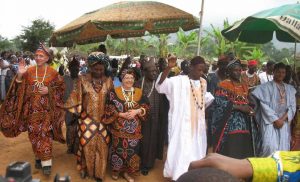
An accurate data of the population of Lebialem has not been established but estimates stand at about I60000 people. Lebialem people especially Bangwas are among the major tribes with huge colonies of Settlers in other tribes, for example, Nwah people in the Muyuka sub-Divisiom seem to be more than the Balongs who are the original settlers of the area. Huge colonies of Nwah people also settle in the Bafo area of Kumba, the Bakwere area of Buae, Mutengene, Munyenge, etc. In a nutshell, Lebialem people are scattered all over Cameroon and the world at large with significant populations in Europe, the USA, Canada and Asia (China and Japan).
- LECA Belgium (Lebialem Cultural Associations, Belgium)
- Kwencha Aloys (2018), Discovering the people of M’muock (Fosimondi)
- Vincent Lockhart, A Social-Historical Study of Social Change
among the Bangwa of Cameroon, Occasional Paper No. 52, Centre of African Studies, University of Edinburgh 1994. - Cadman (1922), The Bangwa Assessment Report
Compiled and Edited by: The MUNED Organization
